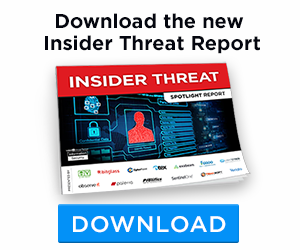

[By John Stringer, Head of Product, Next]
Cybersecurity teams work extensively to keep external attackers out of their organization’s IT environment, but insider threats present a different, equally as difficult, challenge. Identifying insider threats is growing increasingly complex, and, as opposed to external threats, insiders always have some degree of access to systems and data.
What are insider threats?
Insider threats are caused by an employee, service provider, contractor, or privileged business user’s accidental or deliberate actions that compromise an organization’s data security. Through negligence or malice, insiders can cause damage to your organization’s data, systems, networks, equipment, intellectual property, personnel, and facilities.
For the parties mentioned above, accessing data is not a red flag. They most likely do it daily. To that extent, specific behavioral indicators enable cybersecurity teams to differentiate insider threats from regular activity. These behavioral indicators include odd working hours, sudden changes in finances, declining performance, and frequent absences from work.
Five insider threat indicators
Whether intentional or not, the signs of suspicious behavior generated by an insider can be subtle and hard to detect. On the one hand, accidental insider threat types include unwitting and careless users who are either manipulated into performing a malicious activity or attempting to save time by cutting corners, inadvertently bypassing security policies.
On the other hand, when someone deliberately seeks to hurt or negatively impact the organization, they pose a malicious insider threat. When it comes to malicious insiders, the motivation is often financial gain, but others act out of revenge and political or ideological differences. Whether malicious or accidental, effective insider threat detection and identification requires a proactive approach regardless of the threat type. To do so, cybersecurity teams must know the common insider threat indicators. Security personnel should monitor the IT environment for the following insider threat indicators, and in most insider threat cases, only a few of these indicators will be present.
- Unusual login behavior
When users access the same systems regularly, a pattern is established that can be observed by monitoring system logs. When one of these users suddenly varies from their usual patterns, they may be doing so for nefarious reasons.
A user repeatedly attempting to log into systems for which they are not authorized may indicate a malicious insider is trying to compromise enterprise resources. Similarly, users logging into systems at odd hours may be a result of them trying to act covertly.
- Repeated attempts at accessing unauthorized applications and data
An unwarranted increase in unauthorized access attempts for systems or applications containing sensitive information may indicate an insider threat. Every organization must have strict access management procedures that ensure that only those with a business need can view or process sensitive data.
Additionally, a malicious insider may spy on an authorized user and then try to gain access using password variations based on their observations. This type of threat indicator should provide the user’s identity so security personnel can watch them more closely.
- Excessive data downloads
Users excessively and unexpectedly attempting to download large databases or sensitive files may be trying to steal valuable information from the organization. Excessive downloads become even more suspicious if conducted outside working hours or remotely. However, these suspicious behaviors are incredibly challenging to identify in digital-first, global work settings, as remote employees engage in these activities regularly.
Security personnel must establish a baseline of regular activity for their users and devices to distinguish anomalous behavior effectively. If a user changes from their typical download habits, the security team should investigate the users responsible for the download attempts to determine if they have a legitimate reason for this activity.
- Escalating privileges
An insider may try to gain access to information and systems that pose a risk to an organization by requesting escalated privileges that fall beyond the scope of their work duties. Privileges should only be granted for business reasons, and anyone making repeated, abnormal requests should be carefully monitored.
- Non-technical indicators
Indications that an insider may threaten an organization go beyond just the technical aspects of their day-to-day activities. Indicators can also be derived from personal behavior or issues that are not directly related to their job. For example, individuals in financial distress or angry at corporate decisions may become an active threat.
Addressing insider threat indicators
Insider threat detection necessitates a forward-thinking strategy. Risk assessments and audits help to identify vulnerabilities in an organization’s security measures. Addressing these gaps and strengthening the cybersecurity processes and procedures that protect a company’s valuable data reduces the risks of insider threats.
Beyond evaluations, modern insider risk management and data loss prevention (DLP) solutions leverage advanced analytics and threat intelligence to identify early indicators of potential insider threats and automatically restrict risky and malicious activity. By enforcing the organization’s data handling policy, a DLP platform keeps unauthorized users away from sensitive resources and provides reports that can be used to investigate potential insider threats before they cause damage to the company.





















